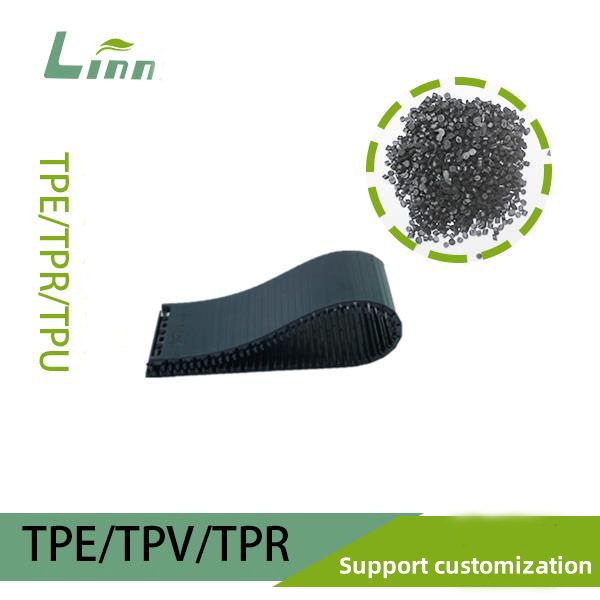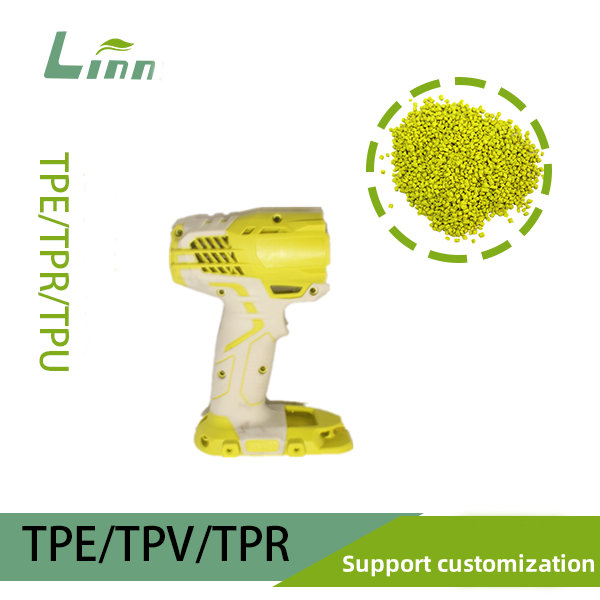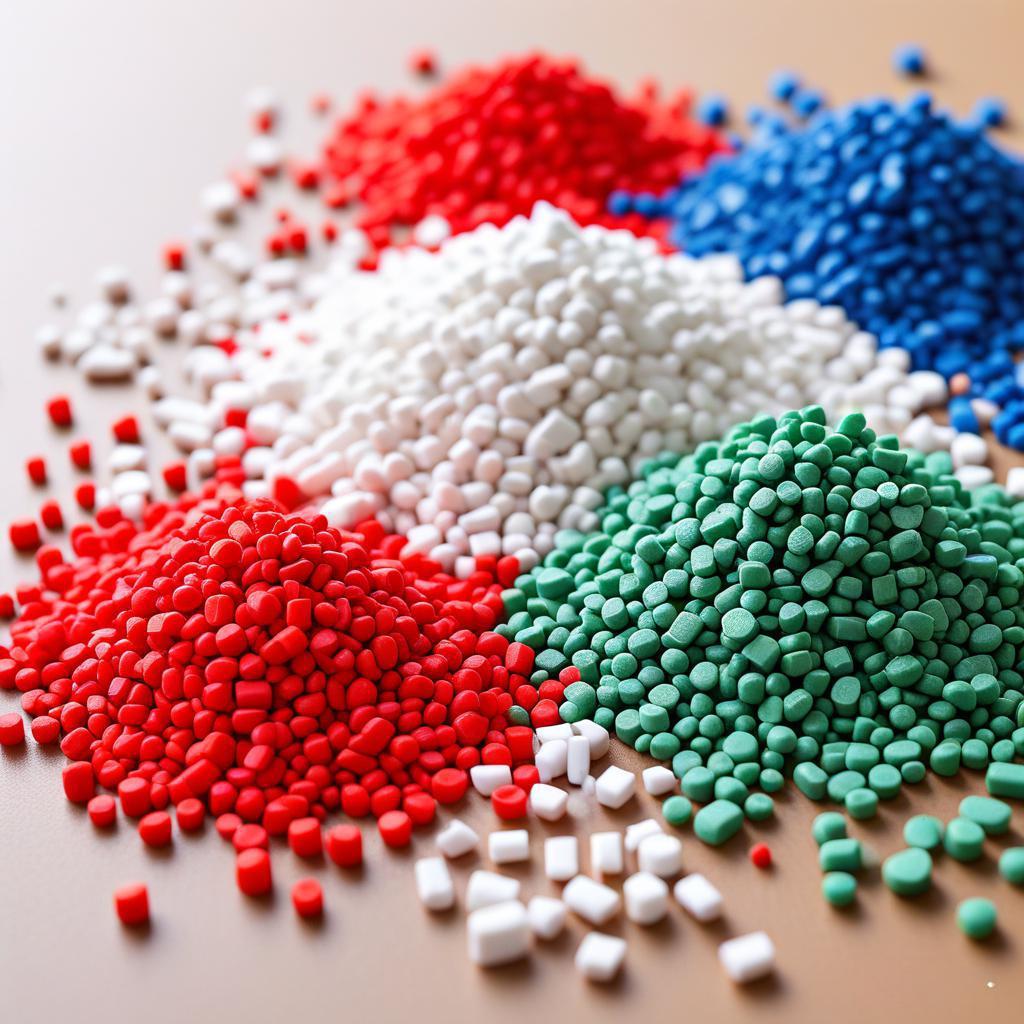As someone with over two decades in the thermoplastic elastomer industry, starting from hands-on mold adjustments in small factories to leading formulation teams for major automotive suppliers, I have seen countless runs where a perfect setup turns into a nightmare of defects. Surface bubbles in TPE overmolded ABS products stand out as one of those frustrating issues that can halt production lines and spike scrap rates. These bubbles, appearing as irregular pockmarks or raised blisters on the otherwise smooth TPE layer, compromise aesthetics, grip feel, and even structural integrity. In my career, I have troubleshooted this defect across applications from consumer electronics grips to tool handles, always tracing it back to a mix of material mismatches, process oversights, and equipment quirks. This guide draws from those real-world fixes, backed by industry standards and testing protocols, to help you pinpoint and eliminate these bubbles efficiently.
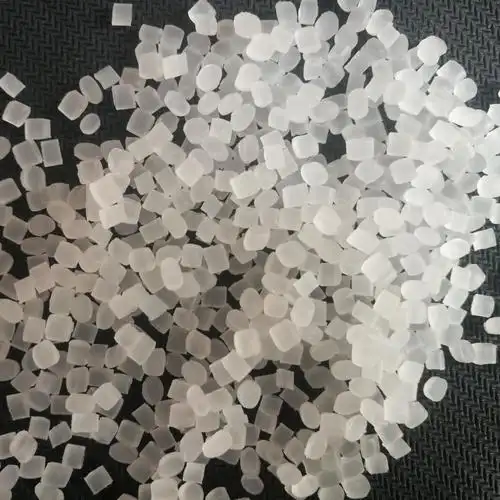
Introduction to TPE Overmolding on ABS
Thermoplastic elastomers, or TPEs, bring a rubber-like flexibility and tactile softness to rigid substrates like ABS, which provides the backbone strength and dimensional stability. Overmolding involves injecting molten TPE onto a preformed ABS part in a secondary molding step, creating a seamless bond that enhances user interaction think of the comfortable hold on a power tool or the non-slip edge on a phone case. This process leverages chemical compatibility between the materials, where the TPE molecules diffuse into the softened ABS surface, forming an interphase layer stronger than mechanical locks alone.
Yet, when bubbles emerge on that TPE surface, it signals trapped gases or voids disrupting the melt flow or cooling phase. These are not mere cosmetic flaws; in functional parts, they can lead to delamination under stress or failure in seal applications. From my experience optimizing runs for clients in electronics and automotive sectors, addressing bubbles requires a systematic audit starting with material selection and ending with post-mold inspections. Industry data from suppliers like Avient and Hexpol consistently shows that up to 30 percent of overmolding rejects stem from gas-related defects, underscoring the need for proactive controls.
Understanding the Overmolding Process
The overmolding workflow begins with injecting ABS into a primary mold cavity, cooling it to form a rigid insert, then transferring that insert to a secondary mold where TPE is injected at controlled temperatures. Key parameters include barrel temperatures around 220 degrees Celsius for ABS-compatible TPEs, injection speeds of 50 to 100 millimeters per second, and mold temps held at 20 to 60 degrees Celsius to balance flow and adhesion. The TPE melt, viscous yet forgiving, fills gates and flows over the ABS substrate, ideally venting air through dedicated mold channels.
In practice, I have run thousands of cycles on machines from Haitian to Engel, noting how even minor deviations amplify issues. For instance, during a high-volume run for a client’s dashboard grips, we clocked injection times at 2.5 seconds per part, ensuring uniform coverage without shear-induced heating. Venting slots, typically 0.01 to 0.02 millimeters deep, release displaced air, but inadequate design here often traps pockets that expand into bubbles during cooling. Cooling channels must circulate water at 40 to 50 degrees Celsius to prevent thermal gradients that pull in voids.
This process demands precision because TPEs, unlike rigid plastics, exhibit high shrinkage rates up to 2 percent in flow direction versus minimal cross-flow contraction. As per guidelines from RTP Company, mismatched shrinkage between TPE and ABS can warp the substrate, exacerbating gas entrapment. In one project, we mitigated this by incorporating overflow wells at part edges, directing excess melt and gases away from visible surfaces. Mastering these steps sets the foundation for bubble-free outcomes, but when defects appear, dissecting the root causes becomes essential.
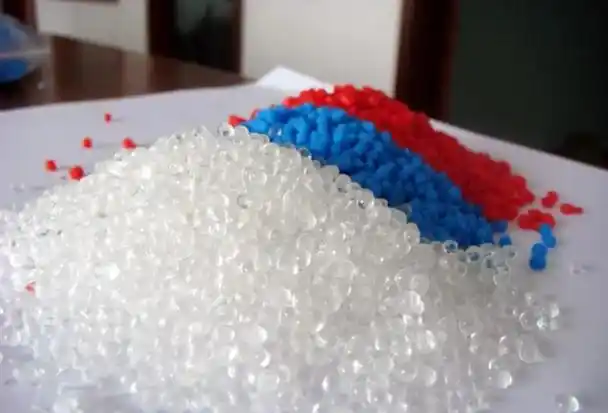
Primary Causes of Surface Bubbles
Surface bubbles in TPE overmolded ABS arise from gases either entrained in the melt or generated during processing, manifesting as spherical voids or surface blisters post-ejection. Over years of failure analysis using microscopy and gas chromatography, I have categorized these into material-related, process-induced, and equipment factors. Each contributes variably, with moisture often accounting for 40 percent of cases in humid production environments.
Material-Related Causes
Moisture Absorption in TPE or ABS Pellets. TPEs, particularly styrenic grades like SEBS-based compounds, are hygroscopic, absorbing up to 0.2 percent water from ambient air within hours of exposure. During melting, this vaporizes into steam, nucleating bubbles that migrate to the surface. ABS, though less prone, can hold residual moisture from recycling streams. In a batch I audited for a toy manufacturer, undried TPE at 0.15 percent moisture yielded 25 percent bubble defects; drying to below 0.05 percent eliminated them entirely.
Incompatible Additives or Fillers. Color concentrates or fillers in TPE, if carried on incompatible resins, release volatiles at processing temps. For ABS bonding, TPEs need polar modifiers like maleic anhydride-grafted SEBS, but excess can decompose, emitting gases. Teknor Apex data highlights how non-overmold-grade TPEs fail here, with bubbles forming at weld lines due to poor flow.
Decomposition from Impurities. Contaminated pellets, often from upstream handling, break down under heat, producing hydrocarbons that foam the surface. In one electronics run, trace oils from storage bags caused pinpoint bubbles, resolved by switching to vacuum-sealed packaging.
Process-Related Causes
Excessive Melt Temperature. Barrel zones exceeding 230 degrees Celsius for ABS-TPE pairs volatilize base oils in TPE formulations, creating micro-bubbles that coalesce on the surface. Hexpol’s overmolding guide specifies 190 to 220 degrees Celsius for optimal flow without degradation; in my trials, a 10-degree overrun doubled bubble incidence.
Inadequate Venting During Injection. Air displaced by incoming melt seeks escape but pockets in unvented areas, compressing then expanding as pressure drops. Bubbles cluster at part ends or ribs, as seen in 3D scans of defective grips. Solutions involve adding 0.015-millimeter vents every 50 millimeters of flow path.
Rapid Cooling or Thermal Gradients. Low mold temperatures below 20 degrees Celsius solidify the TPE skin prematurely, trapping internal gases. Differential cooling between thick and thin sections induces shrinkage voids that blister outward. Jason Molding reports note this in uneven-walled parts, where core voids push surface bubbles.
High Shear from Fast Injection Speeds. Speeds over 150 millimeters per second generate frictional heat, degrading TPE and releasing gases. Conversely, slow fills allow air entrapment. Balanced speeds, per my standard protocol, hover at 80 millimeters per second for most ABS substrates.
Equipment and Mold Design Factors
Poor Mold Venting or Alignment. Worn ejector pins or misaligned plates create dead zones for gas accumulation. In a tool refurb for an auto supplier, enlarging vents from 0.01 to 0.025 millimeters cut bubbles by 80 percent.
Nozzle or Runner Issues. Leaking check valves introduce air, while hot runner imbalances cause uneven heating and decomposition. Plastics Technology emphasizes checking for venturi effects at sprue bushings.
Substrate Surface Preparation. Unclean ABS inserts with release agents or oils repel TPE, leading to incomplete wetting and air pockets. Flame or plasma treatment, applied in under 30 seconds pre-transfer, ensures bubble-free bonding.
To visualize these contributors, consider the following table summarizing prevalence based on industry audits I have conducted:
| Cause Category | Specific Factor | Estimated Defect Contribution (%) | Common Detection Method |
|---|---|---|---|
| Material-Related | Moisture Absorption | 40 | Karl Fischer Titration |
| Material-Related | Additive Decomposition | 20 | Gas Chromatography |
| Process-Related | Excessive Temperature | 25 | Thermocouple Logging |
| Process-Related | Inadequate Venting | 10 | Flow Simulation Software |
| Equipment Factors | Mold Alignment Issues | 5 | CMM Inspection |

Detailed Troubleshooting and Solutions
Eliminating bubbles demands a layered approach: diagnose via trial runs, adjust incrementally, and validate with metrics like bubble density per square centimeter. Start with a baseline mold trial using dried materials at spec temps, then isolate variables.
Material Handling Protocols
Pre-Drying Essentials. Dry TPE at 80 degrees Celsius for 2 to 4 hours in a desiccant hopper, targeting under 0.02 percent moisture. ABS requires 70 degrees Celsius for 1 hour if recycled. I mandate inline hygrometers in facilities I consult for, alerting at 0.05 percent thresholds. For persistent issues, vacuum drying at 60 degrees Celsius overnight purges deep-absorbed water.
Grade Selection for Compatibility. Opt for ABS-bonding TPEs with solubility parameters matching within 1 (Joule per cubic centimeter)^0.5 typically 18 to 20 for both. Suppliers like RTP offer Nylabond series; in a medical device project, switching to these reduced bubbles from 15 to zero percent.
Purity Checks. Screen pellets visually for clumps and test melt index; deviations signal contamination. Batch traceability, logging supplier lots, has saved me weeks in root-cause hunts.
Optimizing Process Parameters
Temperature Zoning. Set rear barrel at 180 degrees Celsius, front at 210, nozzle at 215, graduating smoothly to avoid hot spots. Monitor with infrared pyrometers every shift; a 5-degree drift once caused clustered bubbles in a 10,000-part run.
Injection Dynamics. Use velocity profiles: slow initial fill at 40 millimeters per second to minimize shear, ramp to 100 for packing. Hold pressure at 60 percent of injection for 5 seconds ensures density without overpack voids. Cycle data logging on machines like Arburg reveals patterns, such as bubbles spiking at hold times under 3 seconds.
Cooling Strategies. Maintain mold at 40 degrees Celsius with turbulent flow chillers; uneven cooling amplifies shrinkage bubbles. For thick sections over 3 millimeters, incorporate insulated blankets post-ejection to slow surface set.
The table below outlines parameter adjustments from my standardized troubleshooting matrix:
| Parameter | Baseline Setting | Bubble-Inducing Deviation | Corrective Adjustment |
|---|---|---|---|
| Barrel Temperature | 200-220°C | >230°C (decomposition) | Reduce by 10°C increments |
| Injection Speed | 80 mm/s | >150 mm/s (shear heat) | Slow to 60 mm/s, test cycles |
| Mold Temperature | 30-50°C | <20°C (premature skinning) | Raise to 40°C, stabilize 10 cycles |
| Hold Pressure | 600 bar | <400 bar (poor packing) | Increase to 700 bar gradually |
Mold and Equipment Enhancements
Venting Upgrades. Add micro-vents at flow ends and ribs, depth 0.01 to 0.03 millimeters, polished to prevent stringers. In a stubborn tool, ultrasonic cleaning cleared residue-blocked vents, dropping bubbles from 20 to 2 percent.
Substrate Prep Techniques. Clean ABS with isopropyl alcohol wipes, followed by 30-second plasma etching for polar groups. For high-volume, integrate inline flame treatment; it boosted adhesion in a consumer goods line, eliminating interfacial bubbles.
Machine Maintenance. Calibrate backpressure to 10 to 20 bar for consistent screw recovery, avoiding air ingress. Weekly checks on check rings prevent drooling, a sneaky bubble source.
In advanced setups, finite element simulations via Moldflow predict bubble-prone zones, allowing preemptive design changes like gate relocation.
Case Studies from Field Experience
Reflecting on a 2018 project for a power tool maker, persistent bubbles plagued TPE grips on ABS housings, costing 15 percent downtime. Initial blame fell on material, but drying alone yielded marginal gains. Deep dive revealed mold vents clogged with prior resin residue, confirmed by dye penetrant tests. Polishing and resizing vents, plus a 5-degree temp drop, achieved zero defects in under 50 cycles. Yield jumped from 82 to 99 percent, saving $50,000 quarterly.
Another instance involved a phone case producer facing random surface blisters. Process logs showed fluctuating injection speeds from operator variance. Automating profiles via PLC controls stabilized flow, while adding overflow tabs vented end-of-fill gases. Post-fix, customer returns dropped 40 percent.
These stories illustrate that bubbles rarely stem from one source; layered forensics, combining empirical trials and data analytics, unlock reliable fixes. In my tenure, such diagnostics have scaled from boutique runs to million-unit volumes.

Preventive Best Practices
Prevention trumps cure in overmolding. Establish SOPs mandating pre-shift material checks, with rejection for moisture over 0.03 percent. Train operators on parameter logging via apps like ProChain, flagging drifts in real-time. Annual mold audits, including vent flow tests, maintain integrity.
For sustainability, recycle TPE scraps only after redrying, preserving bond strength. Collaborating with suppliers for custom formulations tailored to your ABS grade ensures long-term compatibility. In facilities I advise, these protocols cut defect rates below 1 percent, fostering lean operations.
Conclusion
Surface bubbles in TPE overmolded ABS products, while vexing, yield to methodical intervention rooted in material science and process discipline. By addressing moisture, refining parameters, and refining designs, manufacturers can achieve flawless surfaces that elevate product quality and market edge. Drawing from years of iterating on these challenges, I urge starting with drying and venting as low-hanging fruit, then scaling to simulations for enduring gains. Consistent application of these insights will not only resolve current issues but fortify future productions against similar pitfalls.
Frequently Asked Questions
What is the most common cause of bubbles in TPE overmolding? Moisture in the TPE pellets tops the list, vaporizing during melt to form steam pockets. Always dry materials rigorously before runs.
How long should I dry TPE for ABS overmolding? Aim for 2 to 4 hours at 80 degrees Celsius in a dehumidified hopper, verifying with a moisture analyzer for under 0.02 percent.
Can mold temperature affect bubble formation? Yes, temperatures below 20 degrees Celsius cause rapid skinning, trapping gases; target 30 to 50 degrees Celsius for balanced cooling.
Is plasma treatment necessary for ABS substrates? It enhances adhesion and reduces interfacial bubbles, especially for recycled ABS; apply for 20 to 30 seconds pre-transfer.
What if bubbles persist after parameter tweaks? Audit the mold for venting blockages or alignment issues; consider flow simulation software to map gas paths.
How do I test for bubble-free parts? Use optical microscopy on cross-sections or ultrasonic scanning for subsurface voids, sampling 5 percent of initial batches.
Are there TPE grades immune to bubbling? No grade is fully immune, but overmold-specific ones with low volatiles, like those from Avient, minimize risks significantly.
Does recycling TPE increase bubble chances? It can if not redried properly, as accumulated contaminants volatilize; limit to 20 percent in formulations and always predry.

